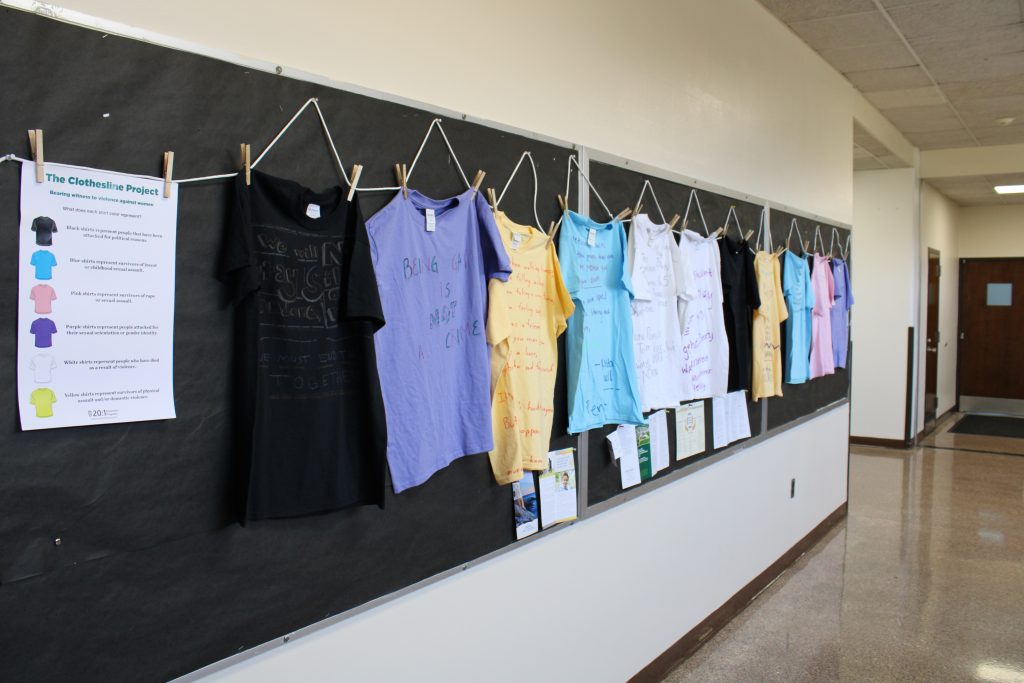In honor of April being Sexual Assault Awareness Month, the Binghamton University 20:1 Prevention Programs unveiled The Clothesline Project — a traveling campus-wide art exhibition with the goal of bringing awareness to the experiences of many different types of survivors.
According to The Clothesline Project website, The Clothesline Project was first created in 1990, in Hyannis, Massachusetts. The original inspiration of the exhibition can be traced back to the Vietnam War, during which “51,000 women were killed by men who claimed to love them” — a shocking and startling truth that continues to be a reality in our society today. The Clothesline Project exhibition has traveled to several different locations on BU’s campus. In the first week of April, it premiered at the Chenango Champlain Collegiate Center (C4). Then it moved to the Hinman Success Center, Appalachian Collegiate Center and finally, the Susquehanna Area Office. By rotating around campus, the exhibition allows for more students and staff to view it. According to the B-Engaged event description, a major goal of the project is to raise further awareness and encourage people to start and continue conversations about sexual violence and its implications, or lack thereof.
When viewing the exhibition, one will notice that there are multiple colored shirts — 12 to be exact. Each color represents a different form of abuse. Pink, red and orange represent surviving rape and childhood sexual abuse, while grey and brown represent surviving verbal, religious and emotional abuse. Additionally, each one of the shirts has a message or story written on them by survivors. Although The Clothesline Project might just look like a random collection of T-shirts, the written messages will reveal much more.
The exhibition itself offers a unique experience for the survivors. They are empowered to share their stories, but only the parts they want to disclose — allowing the survivors to take back their power. Some of the shirts have been created in honor of others, like the one that displayed the names Eric Garner, Michael Brown and the “Central Park Five.”
The same shirt also displays the quote, “As long as people use violence to combat violence, we will always have violence” by American activist Michael Berg. Another one shares encouragement and love for other survivors, writing, “Sometimes it sucks because the people that are supposed to protect you, let you down. But you are loved and you are strong.”
Not only does The Clothesline Project offer empowerment for survivors, but it also aims to make the viewers stop and think. The simplicity of the exhibition allows its message to be heard far and wide. The words are meant to stand out, not the size of the piece, nor the frame or the image. There is nothing visually extravagant or distracting — the survivors’ stories are the focal point. The viewer is put in a position where they can immerse themselves in the exhibition, let the words sink in and reflect on them. The ultimate goal is that with more stories told, awareness will be promoted and then the weight placed on survivors will be shifted onto the world instead, pressuring it to change and become more compassionate.
If you or somebody you know has been a victim of sexual or domestic abuse, please reach out to the Crime Victims Assistance Center at (607) 722-4256, located at 377 Robinson St., Binghamton, NY 13904.



